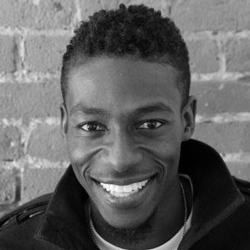
Search Results: power
-
Understanding how our brains operate in relation to power, privilege and status is important if we wish to build a world that works for all. This article gives an overview of the brain tendencies we have in relationship to groups, and provides remedies to counteract the automatic labor-saving devices of our human brains (which often prevent us from seeing the fullness of others, and our own, humanity).
-
Most of us believe we are powerless at work – even if we’re the one “in charge.” This course offers you the opportunity to learn how to consciously change this mindset, and have a positive impact on workplace culture and attitudes along the way. Most of us believe we are powerless at work – even if we’re the one “in charge.” This course offers you the opportunity to learn how to consciously change this mindset, and have a positive impact on workplace culture and attitudes along the way.
-
When Rita first learned about silent empathy she didn't know how soon she'd try it out. She was visiting her daughter and making comments about her life, analyzing her behavior, giving her unsolicited view on everything.
-
Trainer Tip: When someone is in pain and lashing out, might be a time when empathy is needed most. Empathizing in these moments can be very challenging. Mary offers a few words of ecouragement for these situations.
-
Jori and Jim Manske offer writing practices to help us become more firmly grounded in the authorship of our lives. That grounding helps us share ourselves with others more authentically and vulnerably(scary honesty)
-
In October 2016, CNVC Certified Trainer Gitta Zimmerman held her 5th international workshop for people working with street children in Ruhpolding, Germany. This time most of the participants were already experienced, and we were merging more and more into a family. The workshop focus was on “mediation” and “entrepreneurship.
-
-
-
-
-
-
-
-
-
-
Listen to Jim and Jori ask each other about the role of gratitude in their daily activities as they share how gratitude can be a primary tool to help us stay present and at peace.
-
When we're on the receiving end of pain-stimulating assumptions, a microaggression, or prejudice --when we're reactive and resultingly have self-doubt, guilt or shame in ourselves-- is it possible to be intensely authentic while holding care for everyone in the situation? Can we effectively do this even as a third party witnesses to these things? Self-empathy, empathy, and a commitment to authenticity have become essential tools I need to keep sharpened in my toolbox if I am to show up and do the work I value in this world.
-
Anger can result in violence or in a movement towards positive change. We can see this happen in the push for racial justice. When you perceive anger as a form of violence your nervous system becomes activated. Your perspective narrows and old conditioning can take over leading to overwhelm, defensiveness, hatred, or violence. Read on for four ways to to respond to our own or others' anger in a way that mobilizes desired change.
-
- Unpack interpersonal, internalized, and institutional racism from the lens of NVC consciousness
- Hear and share personal stories and the impacts of racism, power, and privilege
- Learn how to translate “hard to hear" messages into meaningful conversations
- Expand and deepen the conversation of systemic and interpersonal racism
-
Subtle boundary violations are more difficult to catch and name in the moment, than obvious boundary violations. Becoming more aware of these moments and finding the words to set a boundary are critical to supporting healthy relating long-term. Three categories of subtle boundary violations are (1.) lack of mutuality, (2.) voice tone and volume, and (3.) speaking for or about someone. Read on to learn more about all three.











